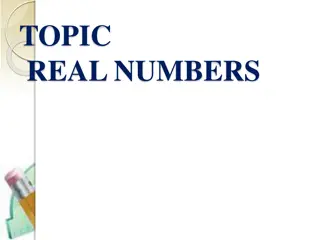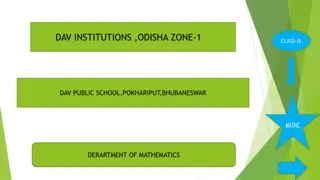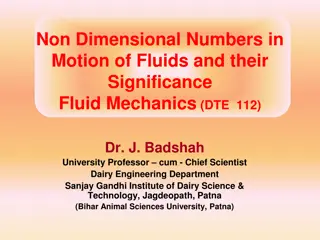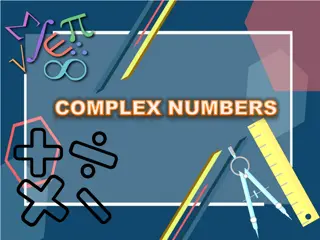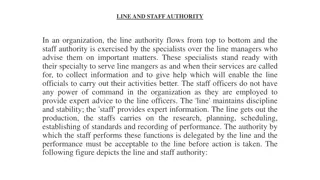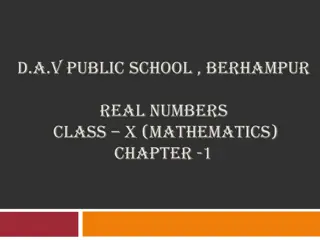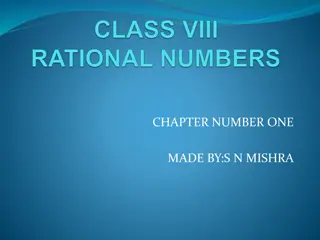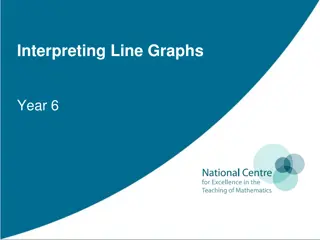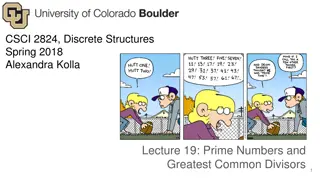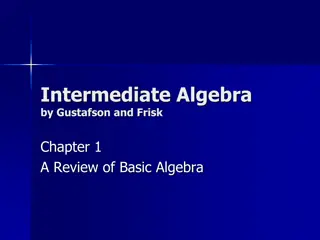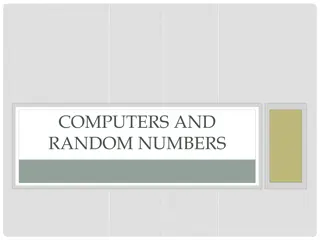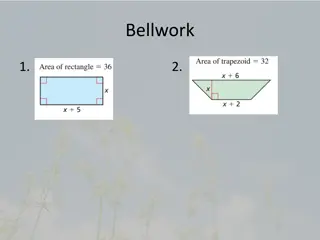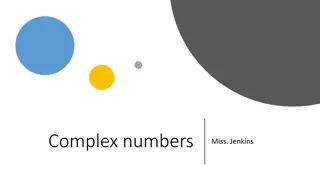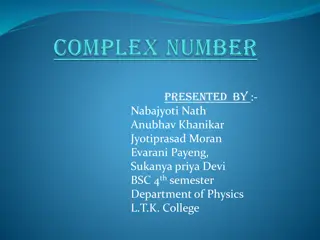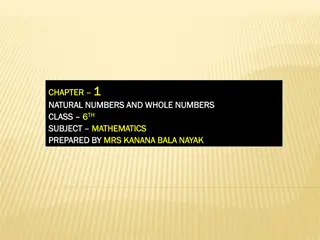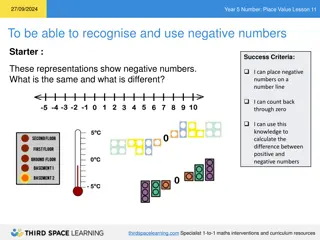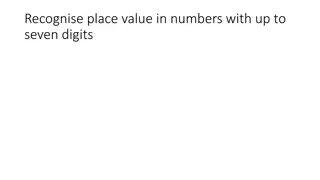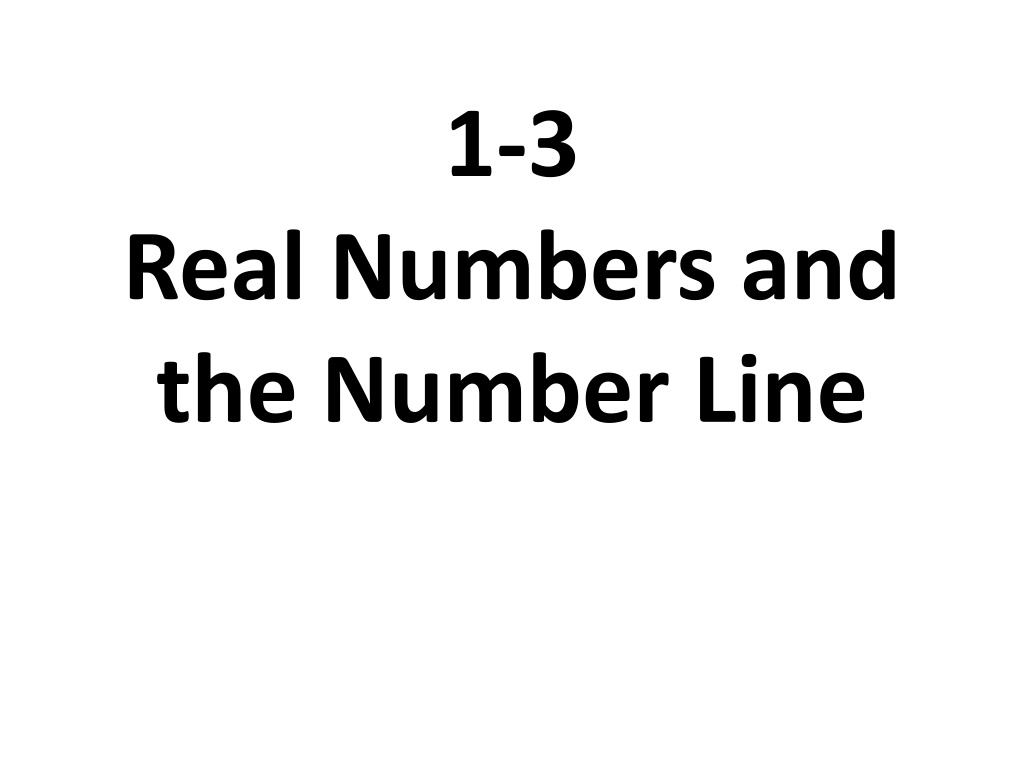
Understanding Real Numbers and Square Roots
Explore the concept of real numbers, the number line, perfect squares, and estimating square roots through practical problems. Learn how to simplify square root expressions, estimate square roots, and compare real numbers using inequalities. Enhance your mathematical skills and deepen your understanding of these fundamental concepts.
Download Presentation

Please find below an Image/Link to download the presentation.
The content on the website is provided AS IS for your information and personal use only. It may not be sold, licensed, or shared on other websites without obtaining consent from the author. If you encounter any issues during the download, it is possible that the publisher has removed the file from their server.
You are allowed to download the files provided on this website for personal or commercial use, subject to the condition that they are used lawfully. All files are the property of their respective owners.
The content on the website is provided AS IS for your information and personal use only. It may not be sold, licensed, or shared on other websites without obtaining consent from the author.
E N D
Presentation Transcript
1-3 Real Numbers and the Number Line
The radical symbol indicates a nonnegative square root
Problem 1: Simplifying Square Root Expressions What is the simplified form of each expression 81
Problem 1: Simplifying Square Root Expressions What is the simplified form of each expression 9 16
Problem 1: Simplifying Square Root Expressions What is the simplified form of each expression 64
Problem 1: Simplifying Square Root Expressions What is the simplified form of each expression 1 36
The square of an integer is called a perfect square. 49 is a perfect square because 72= 49 is a perfect square. When a radicand is not a perfect square, you can estimate the square root.
Problem 2: Estimating a Square Root Lobster eyes are made of tiny square regions. Under a microscope, the surface of the eye looks like graph paper. A scientist measures the area of one of the squares to be 386 square microns. What is the approximate side of the square to the nearest micron?
Problem 2: Estimating a Square Root What is the value of 34 to the nearest integer
Problem 4: Comparing Real Numbers Inequality: a mathematical sentence that compares the values of two expressions using an inequality symbol. < LESS THAN > GREATER THAN LESS THAN OR EQUAL TO GREATER THAN OR EQUAL TO
What is an inequality that compares 17 ??? 41 3 What is an inequality that compares 129 ??? 11.52
Problem 5: Graphing and Ordering Real Numbers What is the order of 4,0.4, 2 ??? 1.5 from least to greatest. Then order on a number line. 3, 2,
Problem 5: Graphing and Ordering Real Numbers What is the order of 3.5, 2.1, 7 2, ??? 5 from least to greatest. Then order on a number line. 9,
Problem 3: Classifying Real Number
Rational Number: In the form ? where a and b are integers and ? 0. In decimal form they are terminating decimal such as 5.45 or a repeating decimal such as 0.416666 which you can write as 0.41 6 ?,
Natural numbers: also called counting numbers and are the ones you count with {1, 2, 3, } Whole Numbers: include the natural numbers, but also includes zero {0, 1, 2, 3, } Integers: The whole numbers, plus their respective negative numbers { , -3, -2, -1, 0, 1, 2, 3, }
Irrational numbers: cannot be written as a fraction. In decimal form, irrational numbers do not terminate or repeat. (some square roots are rational and some are irrational) (if a whole number is not a perfect square, its square is irrational ex: 3 = 1.73205080 )
Rational numbers and irrational numbers form the set of Real numbers
To which subsets of the real number system does each number belong? 15 1.4583 57 3 10



